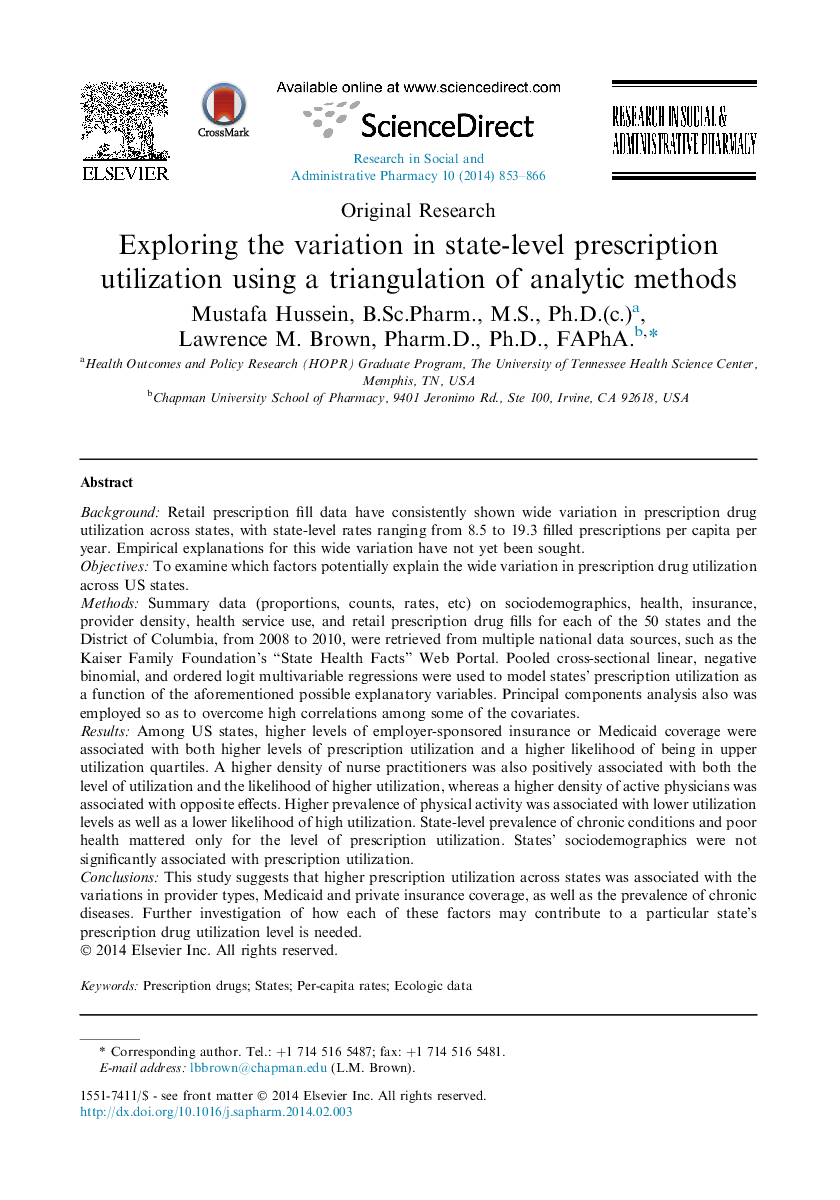| Article ID | Journal | Published Year | Pages | File Type |
|---|---|---|---|---|
| 2508363 | Research in Social and Administrative Pharmacy | 2014 | 14 Pages |
BackgroundRetail prescription fill data have consistently shown wide variation in prescription drug utilization across states, with state-level rates ranging from 8.5 to 19.3 filled prescriptions per capita per year. Empirical explanations for this wide variation have not yet been sought.ObjectivesTo examine which factors potentially explain the wide variation in prescription drug utilization across US states.MethodsSummary data (proportions, counts, rates, etc) on sociodemographics, health, insurance, provider density, health service use, and retail prescription drug fills for each of the 50 states and the District of Columbia, from 2008 to 2010, were retrieved from multiple national data sources, such as the Kaiser Family Foundation's “State Health Facts” Web Portal. Pooled cross-sectional linear, negative binomial, and ordered logit multivariable regressions were used to model states' prescription utilization as a function of the aforementioned possible explanatory variables. Principal components analysis also was employed so as to overcome high correlations among some of the covariates.ResultsAmong US states, higher levels of employer-sponsored insurance or Medicaid coverage were associated with both higher levels of prescription utilization and a higher likelihood of being in upper utilization quartiles. A higher density of nurse practitioners was also positively associated with both the level of utilization and the likelihood of higher utilization, whereas a higher density of active physicians was associated with opposite effects. Higher prevalence of physical activity was associated with lower utilization levels as well as a lower likelihood of high utilization. State-level prevalence of chronic conditions and poor health mattered only for the level of prescription utilization. States' sociodemographics were not significantly associated with prescription utilization.ConclusionsThis study suggests that higher prescription utilization across states was associated with the variations in provider types, Medicaid and private insurance coverage, as well as the prevalence of chronic diseases. Further investigation of how each of these factors may contribute to a particular state's prescription drug utilization level is needed.
